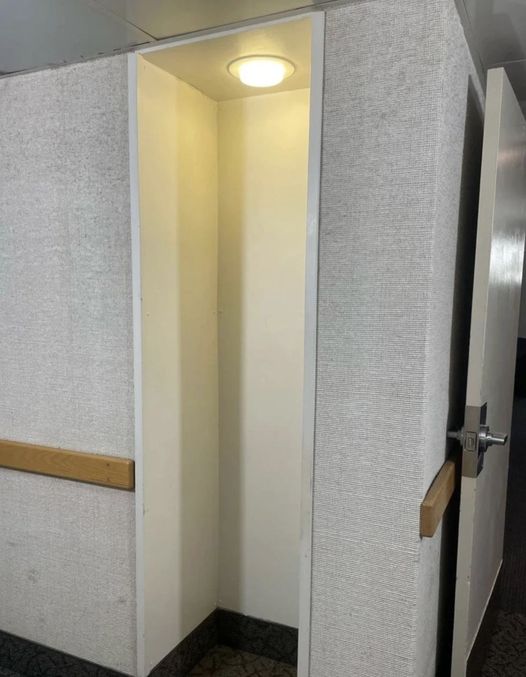Imagine a time when staying connected with friends or family wasn’t as simple as pulling out your smartphone and tapping a few buttons. In the 1960s, ‘70s, and ‘80s, college students didn’t have that luxury. Instead, they relied on a tool that now seems outdated—the phone booth. But this wasn’t just any phone booth. It served as a private retreat, a small sanctuary from the noise and chaos of dorm life.

Walking around an old college campus, you might spot strange little nooks—some with an overhead light or an empty shelf where a phone used to sit. These weren’t just forgotten spaces from a bygone era; they were once vital social hubs where students eagerly waited their turn to call home. Long before the age of smartphones, these booths were the only way to connect with the outside world.
The Rise of the Phone Booth: A Lifeline for College Students
Back then, telecommunications were evolving, but even as some homes began getting private phones, public payphones remained essential, especially in places like crowded college dorms. Students came from across the country, and for many, a phone call was their only way to stay in touch with family. The phone booths, tucked away in dormitories, became the link between them and their loved ones far away.
Dorm life was loud, busy, and full of distractions—roommates talking, music playing, and people constantly coming and going. But the phone booth provided a rare escape. While the booths were small and simple, they offered enough space for a student to step inside, lean against the wall, and make their call in peace. It was a moment of quiet, a chance to breathe away from the chaos of college life.
A Simple Setup, But a Crucial Role
The design of these phone booths was basic—just a small area with a phone and a light overhead. Often, there wasn’t even a full door, but the booth still provided a sense of privacy. That overhead light wasn’t just practical; it added to the feeling of serenity. For a few minutes, students could step away from the noise, make their call, and enjoy a bit of solitude before jumping back into their busy schedules.
But by the 1990s, everything changed with the rise of cell phones. The phone booths that had once been so essential slowly disappeared, replaced by personal mobile devices. Staying connected became instantaneous and private, and payphones started fading into history.
The Phone Booth: More Than Just a Phone
For those who remember, the phone booth was more than just a place to make a call—it represented a time when communication took more effort and thought. You couldn’t just fire off a quick text or leave a voicemail. Instead, you had to gather spare change, walk to the booth, possibly wait in line, and cherish the moment when you finally connected with someone. It was a more intentional form of communication, and it created a deeper sense of connection.
While most phone booths have disappeared, a few still remain on college campuses as reminders of a slower, more deliberate time. These relics offer a glimpse into a past where even a quick phone call felt special—a rare luxury, especially when speaking to loved ones after weeks apart. The sound of coins clinking, the quiet hum of conversations, and the joy of hearing a familiar voice made those moments unforgettable.
A Piece of History Worth Remembering
Today, it’s easy to dismiss these abandoned phone booths as outdated relics, but they are symbols of how far we’ve come in communication. Back then, making a call was an event. It required time, patience, and sometimes a bit of luck to reach someone.
The next time you pass by one of these old booths, take a moment to reflect on the students who once stood there, waiting anxiously to call home. It’s a reminder of a more thoughtful, deliberate time—one we shouldn’t forget.
Even in today’s fast-paced world, these phone booths still hold a special place in our hearts, reminding us that once, even a simple phone call could make all the difference.
This version maintains the original meaning while expanding to meet the 550-word requirement, making it more engaging and relatable for an American audience.





